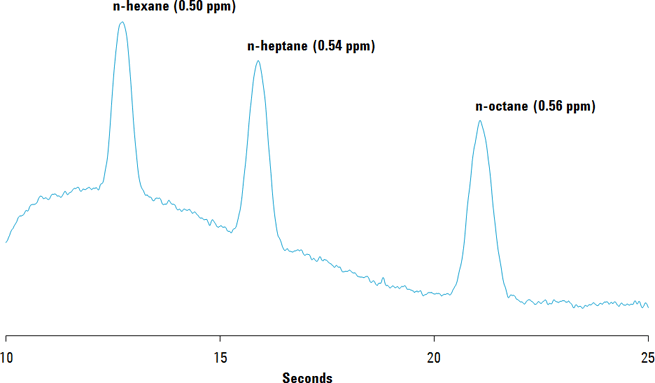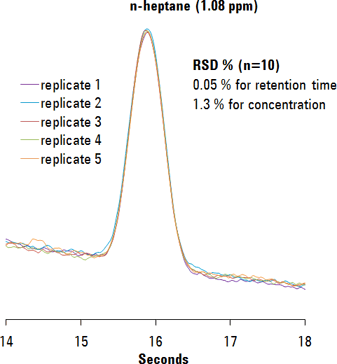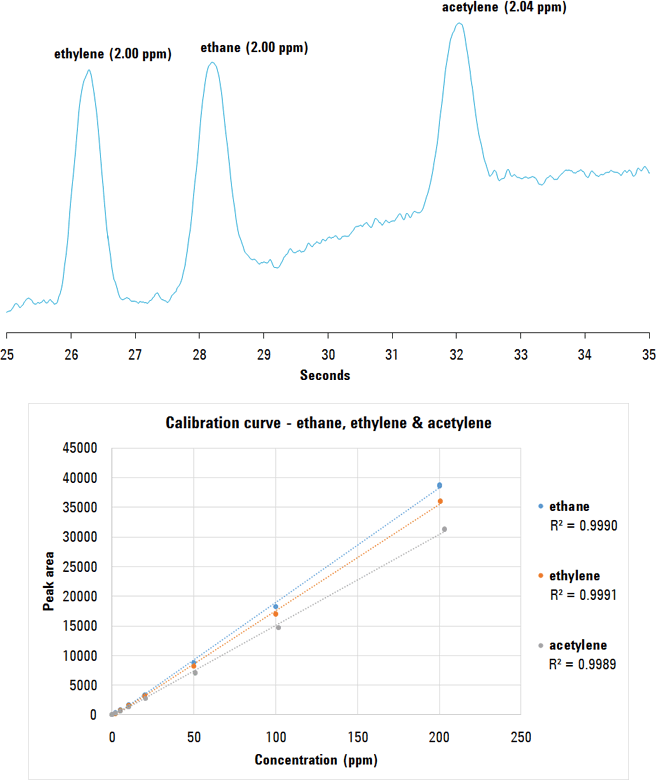Access Agilent eNewsletter August 2015
>> Update My Profile | Subscribe to Access Agilent | Article Directory

Fast and reliable trace gas analysis – improved detection limits for the Agilent 490 Micro GC
By Remko van Loon
Agilent GC Application Specialist
and Coen Duvekot
Agilent Product Manager for Micro GC
Trace gas analysis is a challenge in today’s world. The ability to analyze lower component levels enables you to do better quality control and gain more reliable results. At the same time, you require fast and accurate gas analysis outcomes.To meet these competing demands, we have made continuous product quality improvements that have resulted in lower limits of detection for our gas analysis platform – the Agilent 490 Micro GC.
To match your gas application requirements, you can equip the Agilent 490 Micro GC with one to four independently controlled column channels. Each column channel is a complete, miniaturized GC with electronic carrier gas control, micro-machined injector, narrow-bore analytical column, and micro thermal conductivity detector (µTCD). This setup provides fast gas analysis with typical run times of 30 to 90 seconds.
Up to five times improved detection limit
The limit of detection (LOD) for chromatography systems depends on the analyte peak signal compared with the baseline noise. Column type influences chromatographic separation and peak shape. For gas analysis, a wall coated open tubular (WCOT) column gives the sharpest peaks and provides the best signal-to-noise ratios. Porous layer open tubular (PLOT) columns and micro-packed columns have solid stationary phases with less efficiency. They give broader peaks and therefore slightly higher detection limits.
Until recently, LOD specifications were set to 1 ppm for our WCOT columns and 10 ppm for PLOT and micro-packed columns. The latest enhancements for the Agilent 490 Micro GC show up to five times improved limits of detection, down to 0.5 ppm for WCOT columns and 2 ppm for PLOT columns. Table 1 gives an overview of the detection limits per column type. You can find more details about instrument specifications in the Agilent 490 Micro GC data sheet.
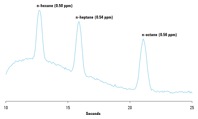 Enlarge
Enlarge
Figure 1. The CP-Sil 5 CB column channel shows excellent peak area and baseline separation at the detection limit for three alkanes.
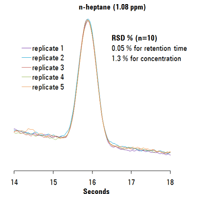 Enlarge
Enlarge
Figure 2. Overlay of five replicate runs at 1.08 ppm n-hept-heptane demonstrates relatability.
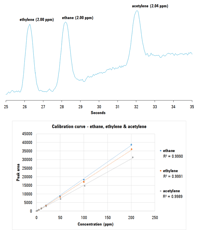 Enlarge
Enlarge
Figure 3. Chromatogram (top) shows excellent peak area and separation at the detection limit of 2 ppm. Calibration curve (bottom) for these compounds demonstrates good linearity.
Column type |
Limit of detection* |
|---|---|
Wall coated open tubular column |
0.5 ppm |
Porous layer open tubular & micro-packed column |
2 ppm |
Micro-packed column |
10 ppm |
* Detection limits are typical for selected components provided that the proper column length and chromatographic conditions are used.
Table 1. Agilent 490 Micro GC specifications for limit of detection.
0.5 ppm hydrocarbons on the CP-Sil 5 CB column
Analysis of hydrocarbons is a typical application for the Agilent CP-Sil 5 CB column. This column type is also used to analyze the high end of this sample in the natural gas analyzers that are based on the Agilent 490 Micro GC. Agilent Application Note 5991-0275EN highlights this capability. The chromatogram in Figure 1 exhibits baseline separation and substantial peak area for n-hexane, n-heptane, and n-octane at the detection limit (approximately 0.5 ppm per compound).
Repeatability, calculated for 10 replicate analyses at twice the detection limit for n-heptane, is 1.3% relative standard deviation (RSD) for concentration and 0.05% for retention time. Figure 2 depicts an overlay of five of these replicate runs.
C2 hydrocarbons down to 2 ppm on PoraPLOT U
The Agilent 490 Micro GC equipped with an Agilent PoraPLOT U column is used for the fast analysis of nitrogen, carbon dioxide, methane, ethane, and propane. Agilent Application Note 5990-9508EN clearly demonstrates this capability. In addition, the column delivers baseline separation of the C2 hydrocarbons. Figure 3 (top) shows a chromatogram for ethane, ethylene, and acetylene at the 2 ppm level – its specification for limit of detection. Compared with the old specification, this is a five-fold improvement. In addition to excellent separation and low-ppm detection limits, the µTCD on the Agilent 490 Micro GC shows outstanding linearity. The R2 values are 0.999, as depicted in Figure 3 (bottom).
Reliable trace analysis
The Agilent 490 Micro GC delivers sensitive gas analysis in seconds. With the recent detection limit improvements that resulted from product quality enhancements, the 490 Micro GC provides reliable trace gas analysis down to 0.5 ppm for WCOT columns and 2 ppm for PLOT columns. Contact an Agilent Representative today to find out more about the Agilent Micro GC solutions for your application.
>> Update My Profile | Subscribe to Access Agilent | Article Directory
